Residents of Fountain Fairview Cemetery
A few notes from each year's tour research. For readability, I have not included all my sources.
Surnames in order of appearance (for now): OWEN, CELL, SISNEROS, LOCK, HUTCHIN, BOWLBY, CHILD, VAN ENDERT, RUIZ, IMES, LISTON, ELLINGTON, TERRELL
Tom Owen may have been the first white settler in the Fountain region. He paid $50 to put his bag in a wagon and walk to Colorado from Missouri. He built a structure on the banks of the Little Fountain Creek, near the present-day Ray Nixon power plant. He raised hay which he sold to freighters. See the entries for Barbara and Mathias Lock, reportedly the next settlers to arrive here. They were headed south along the front range, headed for the California gold fields, when they met Tom and were convinced to stay. Later in life Tom lived in Aspen, CO and owned much property, which he acquired when people he had loaned money to defaulted.
David Cell and Berdie Johnson Cell were killed by a train in 1907 when their horse and buggy stalled on the tracks just north of Fountain. An infant in arms, Mary Adelaide, was thrown down on the tracks in the collision, and lived. The Cells came to Colorado from Missouri in about 1865 and David was a rancher. Berdie Johnson came to Colorado in about 1889 to visit her brother William Johnson, also a rancher, and she met David. They had six children together. Daughter Mary 1908-1998 is buried in Mendocino, CA.
For extensive notes and articles see the PikesPeak Newsfinder index on PPLD.org. Retired sheriff Dwight Haverkorn has posted his research on the El Paso County homicides.
Pablo Sisneros died in 1921. He is buried next to his infant daughter Maria de la Luz, who died in about 1919. Pablo's death was as a result of taking rat poison, but his wife Mary Louise Vasquez was acquitted of the charges of giving him the poison. She remarried a week after her husband's death. Interesting reading....
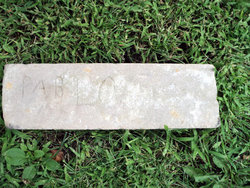
Barbara raised her family, managed their ranch holdings south of town (near Link Road), and managed a store in town. Sadly, mental illness also affected her children. Her son William ill-treated his wife, and she was granted a divorce. He tracked her down to the (Dakotas- source?) and murdered her.
Barbara lost numerous infants, and some were buried near the family ranch in dry wells. Some of the bodies may have later been moved to the family plot in Fairview, or the markers there may just be cenotaphs.
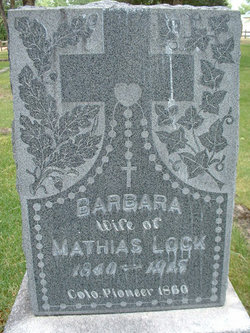
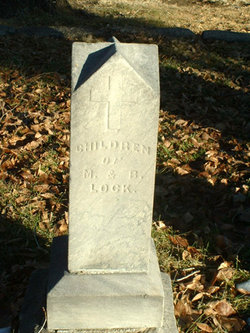
One of the earliest murders in the Fountain Valley happened in June 1874 when two men renting ranch land from the Locks got to arguing, again, over irrigation water. Samuel Carmack, age about 50 years, who had recently come to Colorado from Kansas with his wife and family, was shot in the head after threatening to kill William Ritchie. Perhaps the spirit of an older man, dressed in old clothes, that wanders the area east of Barbara's house is his.
The Hutchin brothers, Isaac and Henry, and brother-in-law Amos Terrell, and their families, came west to Colorado in about 1863. They were Quakers. I need to add the stories on how Henry and his mother were excommunicated from the Society of Friends. When Henry was in his early 20s he was ousted for lack of plainness of dress and dancing.
The Hutchin and Terrell families catered to stage coaches traveling along the front range in the late 1860s. They had a swing station in the bottomland along Jimmy Camp Creek, behind the library. When the Denver and Rio Grande Railroad came through in 1871-ish they needed a new plan. Let's take some of our homestead land and plat it and form a town! Terrellville was suggested, but the name approved by the Post Office was Fountain. Hence the town was platted in 1871. They laid out city blocks and there was even a parcel set aside for a Quaker church or Meeting Hall. This would have been the earliest one west of the Mississippi.
Henry Hutchin died as a result of injuries in the 1888 blast. See more in the railroad articles at right on the blog. He had owned the large white building with columns on the north (still on S Main) and ran a store in it (or the little building behind it). Later the Ark had some unsavory history in the 1940s and this may be the cause of some of the haunting in downtown old-town Fountain.
Victoria Hutchin, Isaac's wife, outlived him by many years. There is an unmarked grave to the north of his. From correspondence with family members over the years, I believe that Victoria is buried there in an unmarked grave, as is fitting for a Quaker woman focusing on simplicity. There is a ring of glazed bricks outlining the grave, barely visible in the grass.
Samuel Bowlby 1861-1873
This is one of the old stones that the Friends have reset. It had broken years ago, and the pieces were piled up so they could be mowed around. This was leading to more abrasion and breaking. A bed was excavated down about 6 inches, leveled and packed with paving sand, and the stone pieces reset. A "crib" of bricks helps keep the pieces in place and protects them. The stone was treated with D2 Biologic to remove some of the staining from lichen and the adjacent interstate.
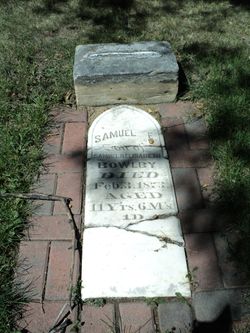
Samuel Bowlby (the father) was born in Ohio in 1826. He went to California in the 1850s, hoping to find gold and strike it rich. He returned to Wisconsin and married Elizabeth in 1857. The family headed west for California in 1863, but made a detour to Leadville, CO, and ending up staying in the state until 1876. Bowlby purchased 120 acres of land in 1870, north of the Fountain Middle School and Fire Station along Hwy 85/87 and near Fountain Creek.
Ione Verna Child 1904-1918 Died during the Spanish Flu epidemic. Her father died from it 2 weeks prior. This ornate stone, a tree stump showing a life cut short, has 14 annular rings on the top. The stone reads CHILDS in error. About a dozen residents of the cemetery died during the flu outbreak, including RB Toothman and Celestina Duran.
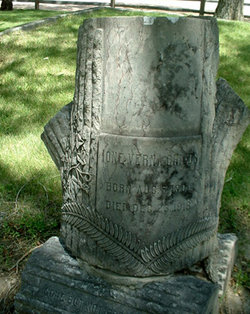
William Van Endert 1835-1874
Another early resident of the Fountain area was murdered by his ranch hand, Thomas Steele. William owned a ranch on the mesa west of town along Little Fountain Creek. One day he and Steele met up and began quarreling, as usual. He accused Steele of improper intimacy with his wife. Steele pulled out a pistol and shot William in the head. At the trial in Feb 1875, the jury deliberated just 12 minutes before rendering a verdict of "not guilty".
Many years ago, I had been told that one burial at Fairview, that of a murderer, was ringed with two links of chains. The truth is that William's ornate spire was ringed with chain at one time, but he was the victim.
In 1860, William and his wife Mary (Blancett) lived in Nemaha County, KS. Online newspaper articles show that her father Josiah was acquitted of murder in Nemaha in 1862, and moved to Colorado before 1870. They lived near Deadmans Canyon along Highway 115.
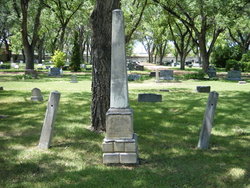
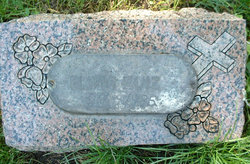
Elipio Ruiz 1914-1926 The first Hispanic settlers in Fountain moved here in about 1910, searching for better job opportunities and pay. Elipio's parents, Ramon Ruiz and Lupita Duran, were from Weston, a coal mining town west of Trinidad, CO. Elipio died from a ruptured appendix at a Colorado Springs hospital. On his grave, his parents placed an elaborate granite headstone, with dogwood blossoms, a cross and a metal plaque. With their very modest means, this must have been a significant expense. Most headstones among the historic Hispanic burials are handmade, while his is ornate. His father worked as a mule driver at a coal mine in 1930.
The original owners of the land on which the cemetery later grew and developed were the Imes Family. See some details on their Findagrave memorial page and on the cemetery history article. This land was patented by Moses Imes in 1875, he having claimed it and settled here in 1869. His sons patented adjacent land. It seems that Mary was in Colorado for about 2 years before she passed. But she was not the first burial here. In the far southeast corner is the grave of little Ella Hutchin, who died a week prior. The Imes land became in informal town burying ground, and it was not until many decades later that the Imes family donated the land to the city.
 To the east of Mary Imes is an old broken headstone. The name is rapidly fading but it reads Florence Liston - daughter of SL and Hulda Liston. It was reset in a crib of bricks to protect it by the Friends of Fountain Fairview. Her footstone was incorporated to help preserve it. Florence was born in Colorado and died at nine months of age in 1875. Her mother was Hula Mable Imes. So when Florence died, she was buried in the Imes lot, near her grandmother.
To the east of Mary Imes is an old broken headstone. The name is rapidly fading but it reads Florence Liston - daughter of SL and Hulda Liston. It was reset in a crib of bricks to protect it by the Friends of Fountain Fairview. Her footstone was incorporated to help preserve it. Florence was born in Colorado and died at nine months of age in 1875. Her mother was Hula Mable Imes. So when Florence died, she was buried in the Imes lot, near her grandmother.
Another infant burial at Fountain also appears to have no family, at first glance. Charlie Ellington died of brain disease at the age of 2 months. His parents were Lycurgus C Ellingtona and Mary Eva Terrell, who was the daughter of Amos and Mary Terrell. LC took up homestead land near Fountain in 1872, and he married Mary in 1876. Charlie was buried next to his grandparents.
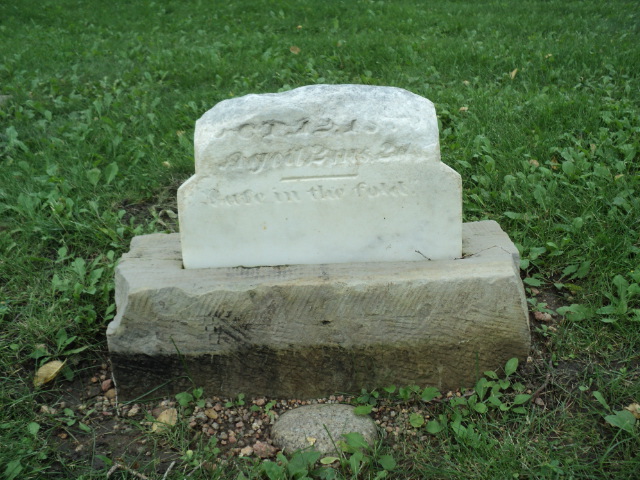
Amos Terrell and his brothers in law, Henry and Isaac Hutchim, and their families, were Quakers who moved to Fountain about the summer of 1863. They operated a stage coach station (located in the bottomland behind the library) until the Denver and Rio Grande Railroad came thru in 1871.
Anna Caroline Terrell, on her 14th birthday on April 23 1869, was at her uncle Henry Hutchin's stage station, which was located at Lanahan Hollow (now Willow Ponds park). She and her cousins were up on the roof of his house and were watching soldiers and their horses on Fountain Creek. One of those soldiers was James O Quick, a man Anna would meet at a later date. From their vantage point, the children could see a party of Indians following the soldiers, keeping one valley between them to remain hidden. The soldiers had stopped at Lanahan Hollow to water their horses, and had set up camp. The Indians rode in on their own horses, and drove off the Army horses, leaving the men stranded. They had to walk into Colorado City to acquire new horses. Anna and James Quick married in 1869 and lived in Fountain, a block north of her parents.
Mr Quick passed along an interesting story- about Little Red Shoes. "At Jimmy's Camp, the Indians often passed by the encampment.(this was were travelrs stopped near highway 94 in the Corral Bluffs area of the county). An old chief, seeing some little red leather shoes and stockings that belonged to the small daughter of Isaac Hutchin, was determined to possess them for his papoose. At first Mr Hutchin refused, but so persistent was the old chief that Hutchin finally traded them to him for moccasins and some large tanned deer hides. Quick, having married Anna Terrell, likely heard this story from his father-in-law.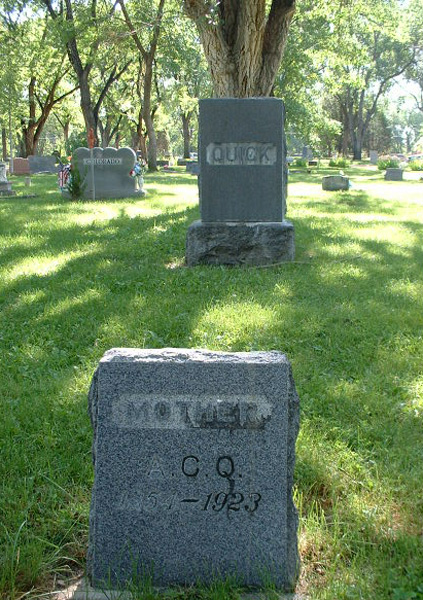

No comments:
Post a Comment